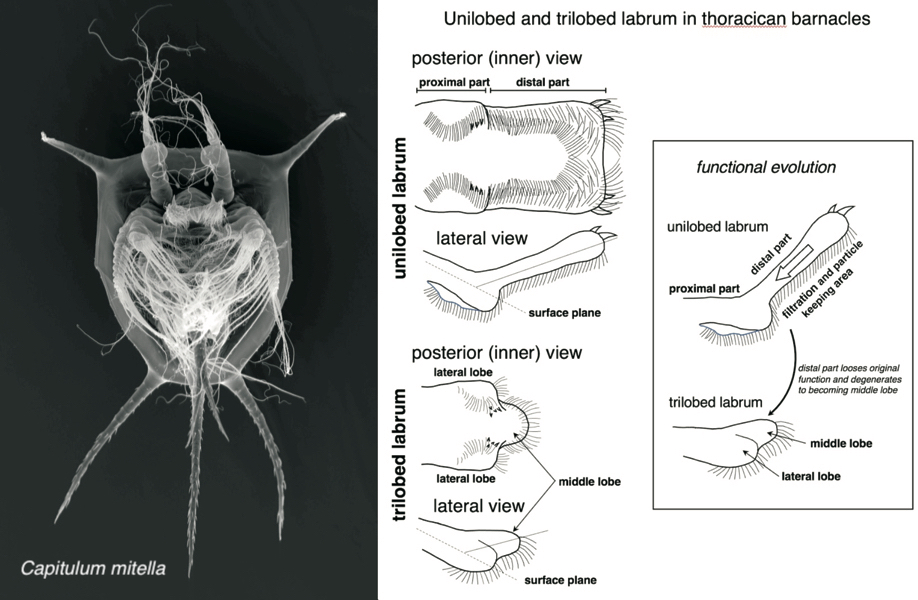Morphological, Ecological and Phylogenetic Significance of Larval Characters of Barnacle Capitulum mitella
Capitulum mitella is universally agreed to be placed lower in the barnacle phylogeny than acorn barnacles (Balanomorpha), and fossil forms very similar to this species can be traced back to the Upper Jurassic. This makes C. mitella central to understanding the large-scale evolution within barnacles. Many previous accounts on the development of barnacle larvae suffer from a shortage in detail and habitually use terminologies that are either inconsistent or hard to compare with those used for other crustaceans. We therefore propose and use a new completely standardized terminology to enable comparison both within barnacles and with larvae of other crustaceans. Our account follows changes in specific features during larval development rather than a stage-by-stage description. The morphological, ecological and phylogenetic significance of these characters is discussed. Special attention is paid to the feeding apparatus and how it may have undergone adaptive evolution in response to changes in the availability of food items through geologic time.

Read the full article, here

